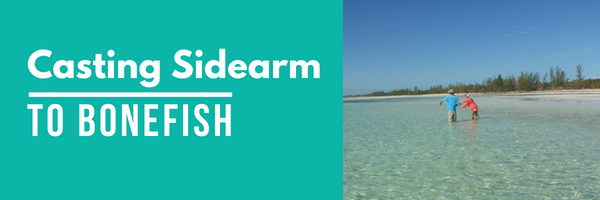Adaptability is a hallmark of good casting.
After all, casting conditions are always going to change. Given the numerous bonefishing environments and situations that you’re likely to encounter, you definitely want several, solid casting techniques in your repertoire. Dropping the plane of your cast to one side, whether back casting or forward casting, is called side casting, or casting sidearm. This manner of presenting the fly can be exceedingly helpful when the winds are high. It can also be the best way to present with subtlety when dealing with spooky bonefish.
Soften Your Presentation
If you’re pursuing bonefish who appear to be especially wary, side casting will allow you to softly present your fly for a sly, delicate entrance that’s as inconspicuous as you need it to be. With this type of cast, the energy from the line loop can unfurl horizontally and entirely above the water’s surface. This will create far less disturbance than if the fly were driven directly into the water via an over-the-top cast.
You’ll Be Far Less Likely To Spook Bonefish
Bonefish are wary by nature. This is how these fish grow to such impressive sizes. Whenever they spot or sense something out of the ordinary, they’ll usually vacate the area fast. Slight rod movements or rod “flash”, bright colors and shadows on the surface of the water, and loud noises will put them on the run. By casting from the side, you can limit the amount of your silhouette that your prey can see so that you’re less likely to run bonefish off before landing one.
Side Casting Is Often The Best Way To Beat The Wind
When facing a strong headwind, casting from the sidearm plane is an effective way to adjust your stroke. Directly above the water’s surface and right within your new plane, you’ll have to contend with far less wind. The wind will be sharper and much more forceful if casting directly above your head.
To cast sidearm, rather than overhead, extend your arm fully to get sufficient power for turning the leader over and for ensuring a straight landing. You should also avoid bringing your arm across your chest. When a side cast is accurate, you’ll land your fly on target and the fly will be ready to swim right away. You won’t need to strip any slack in before moving your fly either. Periodically changing planes to practice side casting will keep your casting abilities sufficiently flexible for thriving in all conditions.









